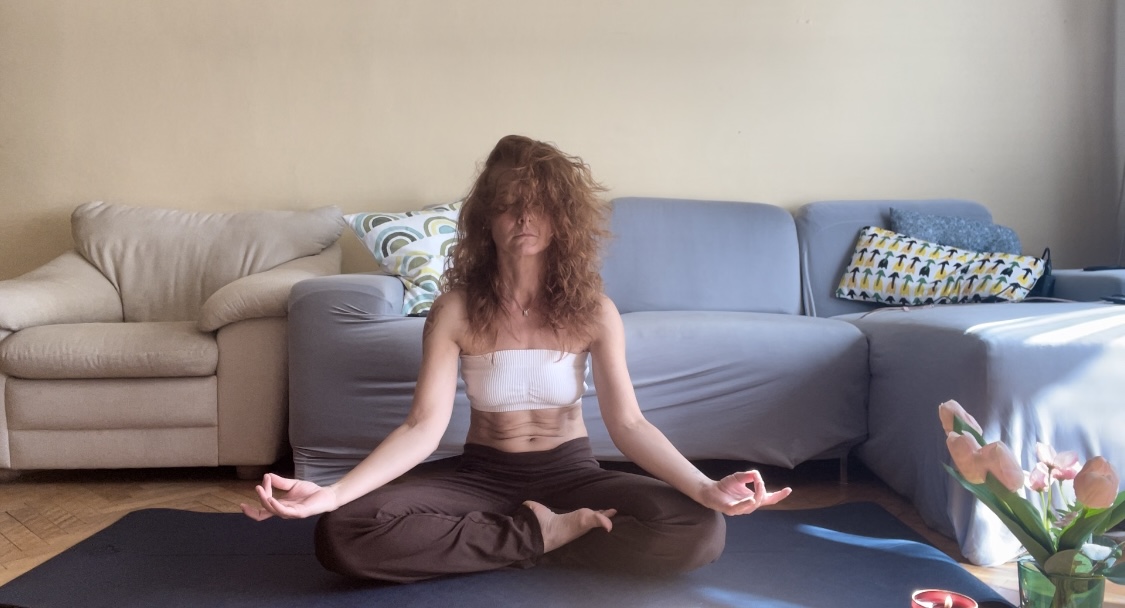Essential Poses for Yoga Beginners
Anyone who has embarked on the vast journey of yoga starts with the basic asanas, which are fundamental and help to build coordination, a sense of balance, and develop flexibility. Here are some of them with which you can easily begin.
Tadasana (Tadasana), also known as “Mountain Pose,” is a fundamental standing pose in yoga that helps improve posture, strengthens the leg muscles, and prepares the body for more complex asanas.

Execution of Tadasana: Start in a Standing Position: Stand with your feet together or hip-width apart, depending on your comfort.
Position the Feet: The soles of your feet should be flat on the floor, with weight evenly distributed between them. Ensure that your toes are pointing forward and not curled.
Straighten Your Back: Lengthen your spine without leaning forward or backward. Roll your shoulders back and down, and relax your arms by your sides.
Activate the Muscles: As you breathe, engage your abdominal muscles and lift your knees to add stability to the pose.
Arms: Start with your arms relaxed by your sides. You can raise your arms overhead if you wish, either with palms together or arms straight out to the sides.
Focusing: Keep your gaze directed forward or on a specific point in the distance to help with balance.
Breathe: Breathe deeply and evenly, feeling your body rise into the Mountain Pose. Hold this position for 20 to 30 seconds, focusing on your breath.
Completion: When you are ready, slowly lower your arms and return to the starting position.
Benefits of Tadasana:
Improves posture.
Strengthens the legs and back.
Prepares the body for other poses.
Calms the mind and reduces stress.
Notes: Ensure that you position your body correctly to avoid tension or discomfort. You can practice Tadasana on various surfaces, where balance and proper form are essential.
The pose Vrksasana (Vriksasana), known as “Tree Pose,” is great for developing balance, concentration, and leg strength.
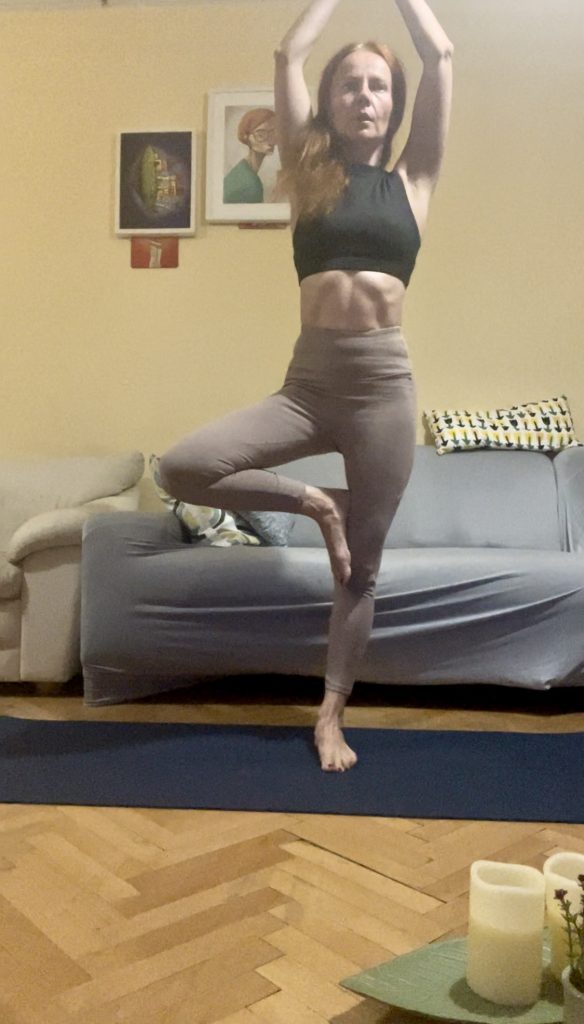
Execution of Vrksasana: Start in Tadasana (Mountain Pose): Stand with your back straight, feet together at hip-width, and arms relaxed by your sides.
Prepare for the Pose: Shift your weight onto your right leg. The foot of your left leg can be lifted off the floor. Find a focal point to help with balance.
Position the Other Leg: Bend your left knee and place the foot of your left leg.
Choose the position: Place it inside the thigh of the right leg (not on the knee). You can also place it on the calf or the ankle if it’s more comfortable for you.
Balance: Ensure that the foot is stable. Maintain your balance by focusing your gaze on the focal point.
Position the Arms: Raise your arms upward, bringing them together over your head (as the tree grows upward) or place your hands in a prayer position in front of your chest.
Hold the Pose: Stay in the pose for 20 to 30 seconds, breathing evenly and calmly. Direct your attention to your breathing.
Transition to the Other Side: Lower your arms and bring your left foot back to the ground. Repeat the pose by shifting your weight to your left leg and following the steps again.
Benefits of Vrksasana:
Improves balance and coordination.
Strengthens the leg muscles.
Develops concentration and focus.
Notes: If you have difficulties with balance, you can lean against a wall or practice next to a more stable object. Make sure the pose does not cause discomfort in your knees or lower back. Adjust the position of your foot as necessary. Enjoy the practice and the development of your balance and concentration!

Suhasana (Suhasana), also known as “Easy Pose,” is a meditation pose that aids relaxation and concentration. Here’s how to do it:
How to Perform Suhasana: Find a Comfortable Space: Choose a quiet place where you can sit without distractions.
Sit on the Floor: Sit cross-legged or with slightly extended legs, so that your feet are beneath your knees and your knees are dropping out to the sides.
Straighten Your Back: Keep your back straight without leaning backward. Your shoulders should be relaxed.
Position Your Hands: You can place your hands on your knees, with palms facing up or down. You can also do “Chandra Mudra” (thumb and middle finger together).
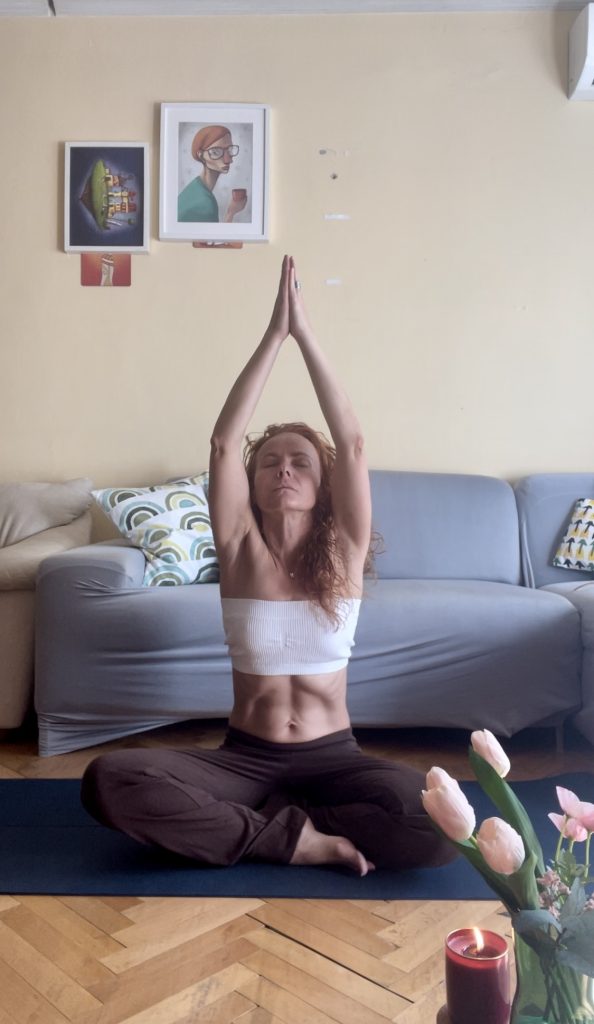
Close Your Eyes: You can close your eyes or keep them half-closed, looking down.
Breathe Deeply: Focus on your breath. Inhale deeply through your nose and exhale slowly, feeling your body relax.
Benefits of Suhasana:
Helps to calm the mind.
Improves concentration and focus.
Encourages relaxation.
Notes: If you have issues with your knees or back, you can use a cushion or sit on a chair with proper posture. The most important thing is to feel comfortable and maintain a natural posture of the body.
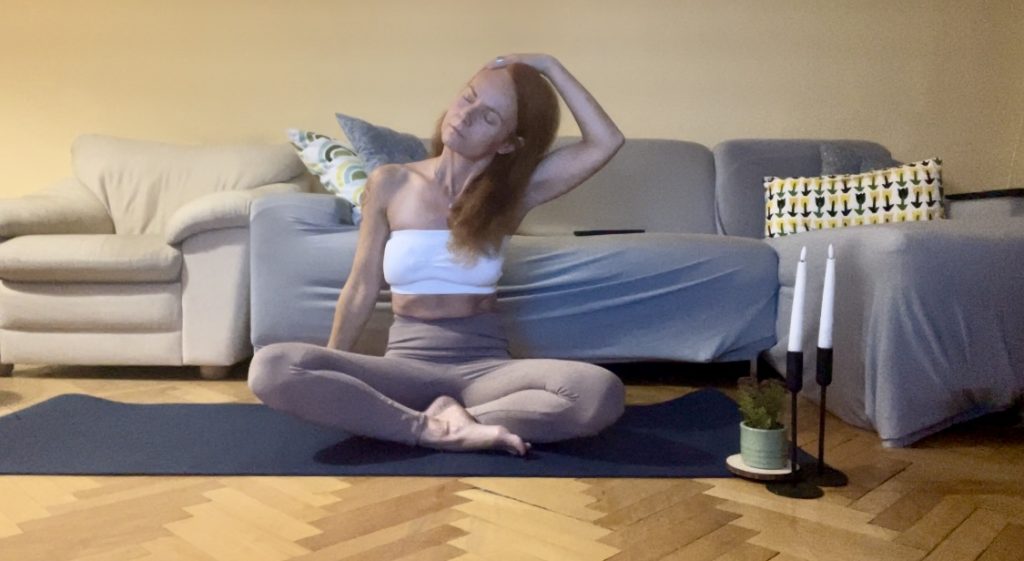
From Suhasana, you can perform a few easy stretches for the neck by holding your head towards the left ear with the palm of your right hand and gently pulling to the right. Then do the same in the opposite direction.
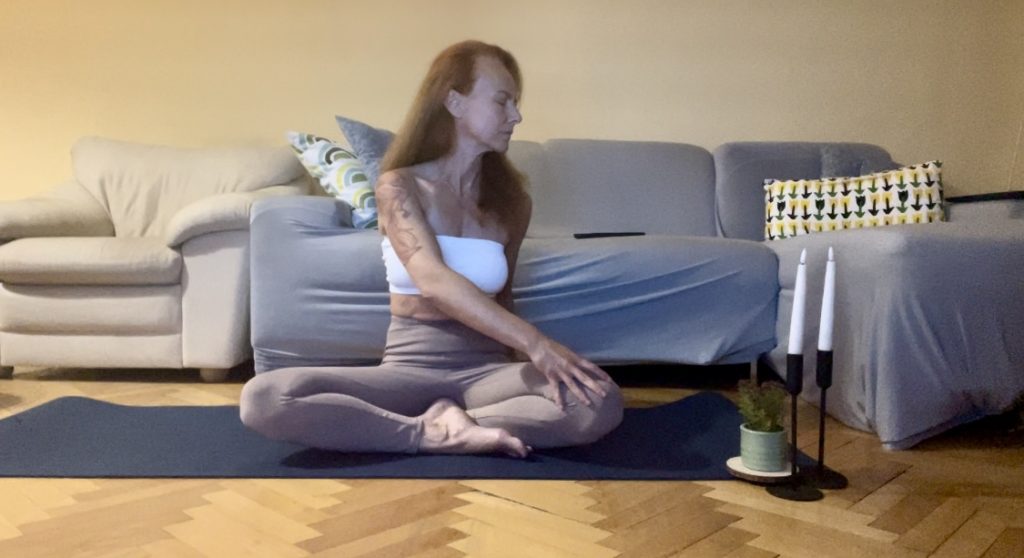
Parivrtta Sukhasana (Parivrtta Sukhasana) is a twisting pose that is excellent for improving the flexibility of the spine and calming the mind. It also offers comfort and stability. Here’s how to perform it step by step:
Execution of Parivrtta Sukhasana: Start in Sukhasana: Sit on the floor with your legs crossed (you can fold one leg under yourself and place the other in front).
Position Your Hands: Place your palms on your knees or let them rest freely.
Straighten Your Spine: Lengthen your spine and relax your shoulders. Breathe deeply to prepare for the twist.
Begin the Twist: Lift your right arm up and, while inhaling, twist to the left. Place your right hand on your left knee and your left hand on the floor behind you for support.
Hold the Pose: Maintain the pose, ensuring your shoulders remain relaxed and your spine is upright. Keep a gentle twist without tension. Breathe deeply and hold the pose for about 20-30 seconds.
Transition to the Other Side: Slowly return to the center position and repeat on the opposite side by twisting to the left and placing your left hand on your right knee.
Benefits of Parivrtta Sukhasana:
Improves the flexibility of the spine and hip joints.
Helps calm the mind and manage stress.
Enhances digestion.
Notes: If you feel discomfort in your lower back, reduce the twist or ensure that you are within a safe range of motion. It is suitable for practicing meditation before or after a long yoga session.
Enjoy your practice and feel the energy flowing in your body!
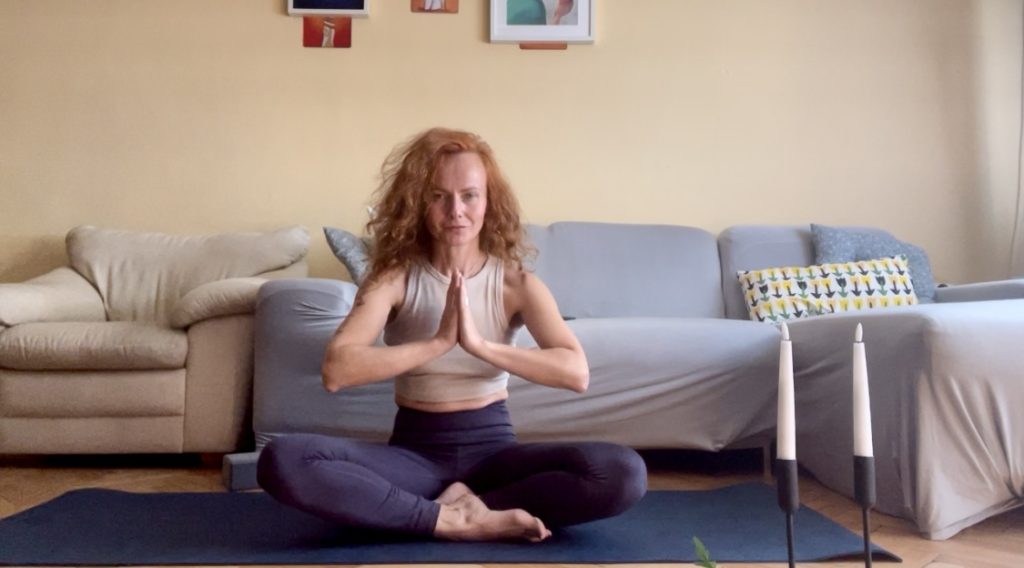
Stay inspired and open to the new opportunities that life offers us!
